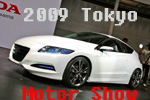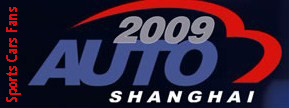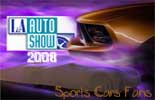First Drive: 2010 Chevrolet Equinox

The Chevrolet Equinox has never really been a loser in the compact crossover segment, but it has also never really been a leader, either. It was always just kind of "okay," with milquetoast styling, so-so performance and reasonable roominess, but never anything really attention grabbing. Coming just a week after General Motors filed for Chapter 11 bankruptcy protection, Chevrolet General Manager Ed Peper officially introduced the all-new 2010 Chevy Equinox as the first product of the "New General Motors," and it's clear that the company hopes their new baby is able to grab a much larger share of this burgeoning segment.
Among other things, the Equinox gets all new powertrains, including an available four-cylinder engine for the first time. Both the four and the new 3.0-liter V6 have direct fuel injection and are paired up with six-speed automatic transmissions. In fact, everything about the Equinox is new. Apparently the only major component carried over from the old model is the sunroof module. Everything else has been reworked or replaced. We had the opportunity to spend some seat time with both the four-cylinder and V6 models with front- and all-wheel drive.
Chevrolet calls the Equinox a compact crossover, but when you look at its dimensions, this CUV is in many respects more mid-size than compact. At 187.8 inches long, it out-spans the Ford Escape by 13 inches and the Toyota RAV4 by six inches. It's even two inches longer than a Ford Edge. Chevy's rationale for calling this a compact is the 72.5 inch width, which is 0.5 inches less than the RAV4 and two inches less than the Edge. So it's really a "tweener" of sorts. However you define it, though, the Equinox is especially roomy relative to competitors.
As soon as you lay eyes on the new Equinox, it's clear that the design team put in a serious amount of effort this time. The dowdy looks of the previous generation have been replaced by a bold modern look that's more muscular and better proportioned. Like all other recent Chevrolets, this one starts with a dual port grille that is flanked by a pair of handsome jeweled headlamp clusters. The combination of a rising character line along the flanks, aggressive wheel well flares and a higher beltline combine to visually lower the new model – even though it's actually four inches taller.
The Equinox also gains Chevy's current design DNA on the inside, with a dual cockpit instrument panel layout similar to the Malibu and Traverse. The new look is a huge improvement over the old model, both aesthetically and functionally. Like several other recent GM vehicles, the dashboard flows into the door panels with a look that provides some continuity. Some of the past iterations of this, notably the Saturn Aura, had an issue with vertical alignment of the door panels and dashboard. We've brought up this problem with GM officials on several previous occasions and they have apparently taken it to heart. None of the four Equinoxes we drove had any such alignment issues.
In fact, Mo Wazir, Vehicle Line Director for GM's compact crossovers, explained that the engineering team addressed this from a root cause approach when developing the new Equinox. They examined why the parts were misaligned and found that it was related to tightening the two sides of the dashboard separately. The assembly process has been changed to ensure that the dashboard is more consistently installed. In fact, all the fits in the Equinox testers we sampled were better than before. That's not to say the interior is perfect, however.

The same Ingersoll, Ontario assembly plant that built the previous Equinox began building so-called salable units about two months ago. These early production units are generally kept within GM for its captured test fleet, where engineers and managers drive the cars to look for last minute production problems. The examples that we drove were from this early build batch and the first units destined for customers are being built this week. The most prominent issue that we noted was a color disharmony on the dashboard. All four of the vehicles we drove had the two-tone interior scheme consisting of either black/brown or black/light gray.
The brown was the issue. The plastic panels covering the passenger side airbag and around the instrument cluster on the driver's side had a slightly different shade than the two mating pieces on either side of the center console. According to Wazir, the center stack panels come from a different supplier than the other parts. GM is already aware of the problem and working to resolve it. The gray version also had a slight mismatch, but it was far less noticeable. The only other gripe we had with the interior is the silver plastic cover on the center stack and the vent surrounds. GM opted to put a glossy clear coat finish on these parts that we feel makes them look cheap. We would prefer the richer look of a matte or satin finish for these parts – GM has also heard this complaint from others and is considering a change here as well. Wazir explained that the clear coat finish gives the part better durability and resistance to scratches, but while it may be functional, we still don't like it.



Otherwise, the interior is very good. The controls are well-placed and easy to use, with plenty of storage compartments. Models that don't have the optional navigation system get a storage bin above the radio like the one in the Malibu and all models get a bin ahead of the shifter as well as the deep compartment in the center console. That bin is large enough to accommodate a 15-inch laptop computer. It also has auxiliary audio and USB ports that support MP3 players or just thumb-drives with songs on them.
The front seats use a common seat frame developed by GM that is employed on a variety of platforms including the Epsilon II Opel Insignia, Buick LaCrosse and other models. The seats have excellent cushioning which provides decent lateral support and excellent comfort. In this case, one of the advantages of using a common frame is that the lower cushion is longer than found on many cars, thus providing decent thigh support – of our most common complaints. In the back, GM has retained the sliding rear seat that can move fore-aft a total of eight inches. When pushed back, the 112-inch wheelbase allows for positively luxurious legroom. If more cargo room is needed, sliding the seat forward provides extra space for gear or luggage.

How about those fancy new DI engines? They are very good indeed – especially the four-cylinder. This is the first four-cylinder ever offered in the Equinox and it runs smoothly and quietly with no noticeable ticking from the direct fuel injectors. Both the four- and six-cylinder engines at 182 hp and 264 hp respectively make about the same amount of power as the 3.4-liter and 3.6-liter V6 engines used in 2009 models. Unfortunately, the smaller displacement and lack of boosting mean that both engines lack in torque compared to the old engines. The four pot generates 172 lb-ft at 4,900 rpm while the old 3.4-liter V6 produced 210 at 3,800 rpm. Similarly, the previous model's 3.6-liter V6 that produced 250 lb-ft at 2,500 rpm easily trounces the 3.0-liter's 222 lb-ft at a lofty 5,100 rpm. Frankly, we would have preferred that GM go down the turbocharging path with even less displacement for the resulting fatter torque curve. Of course, that would have added cost, which GM was obviously trying to avoid.
Nonetheless, the four-cylinder will still likely be more than sufficient for the majority of drivers who don't need any significant towing capacity. The four can drag along an extra 1,500 pounds, while the V6 can pull 3,500 pounds. The four-cylinder Equinox is no speed demon (neither is the V6 for that matter), but it has enough acceleration that you'll never worry about merging onto freeways or making a pass with a reasonable amount of room. Both six-speed automatic transmissions have been re-calibrated and have much improved shift quality compared to previous versions, especially the larger unit used with the V6.
One new feature of the four-cylinder model is an ECO button located ahead of the shifter. Currently, it just makes adjustments to the shift map and torque converter lock-up points to help enhance fuel efficiency. It's claimed to improve mileage by about 1 mpg overall. Future iterations will likely add control over the electronic throttle response and cruise control, as well. During our drive time in the front-wheel-drive four-cylinder Equinox, we averaged a respectable 26 mpg – not bad for a 3,800-pound non-hybrid CUV.

The aerodynamic work done on the Equinox pays dividends for fuel economy and for NVH. Driving in the Equinox was a remarkably subdued experience. The plastic A-pillar covers on the old model are gone and the windshield is now virtually flush with the surrounding pillars. The result is a drastic reduction in wind noise. Combined with the more rigid body shell (which includes a one-piece body side stamping and acoustic laminated side glass), the Equinox delivers a pleasantly quiet interior.
The Equinox's strut front and multi-link rear suspensions are also well tuned to provide an excellent balance of ride and handling, especially on the base 17-inch wheel and tire package. Front-wheel drive models can have optional 18s, which are standard with all-wheel drive and 19s are optional on AWD versions. Switching to the larger, heavier wheels makes a noticeable difference to ride quality, with small road imperfections being much more likely to pass through to occupants. Another factor that detracts from handling is the all-wheel drive. The extra couple hundred pounds of hardware seem to make it feel much less nimble than the FWD variant, but the system ought to pay dividends when the weather turns sour..
Four-cylinder models get an electric power steering system while the V6s stick with a tried-and-true hydraulic setup. The difference comes down to cost and fuel efficiency. The EPAS is more expensive but draws less power and since GM was trying to max out mileage numbers for the four, it received EPAS. Eventually, as costs come down, EPAS will be offered across the board. Both systems felt about the same at the steering wheel, with comparable levels of effort that were just about ideal. Neither system provide huge amounts of cornering force feedback, although the hydraulic system felt slightly better.
GM is pricing the new Equinox very aggressively and greatly reducing the number of buildable combinations. Most items are now packaged in four trim levels and, including colors, there are now about 1,200 different combinations that the plant can build compared to over 10,000 previously. The base LS model starts at just $23,185 with the four-cylinder engine and front-wheel drive. That's $1,825 less than a 2009 Equinox LS. A maxed out LTZ with every possible option including the V6, all-wheel drive, sunroof and navigation will only be about $35,000. Both four-cylinder and V6 engines and front- or all-wheel drive can be selected at any trim level.
[Source: Autoblog]















